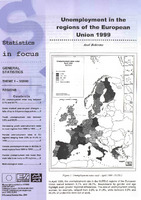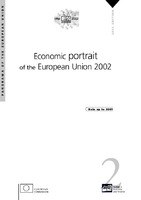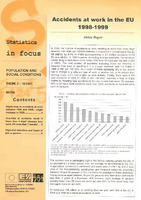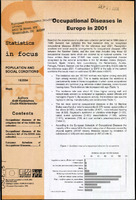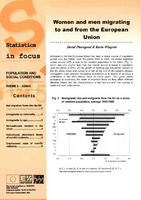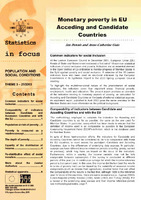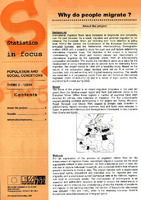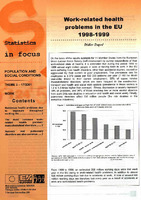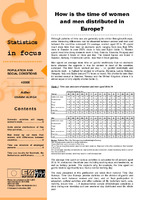Αναζήτηση
Αποτελέσματα 1-10 από 59
Statistics in Focus. Regions. Unemployment in the regions of the European Union 1999. 2000.3
(Statistical Office of the European Communities, 2000-07-01)
In April 1999, the unemployment rate in the NUTS-2 regions of the European Union varied between 2.1% and 28.7%. Breakdowns by gender and age highlight even greater regional differences. The rate of ...
Economic portrait of the European Union, 2002 Edition
(Office for Official Publications of the European Communities, 2002-08-01)
Statistics in Focus: Population and social conditions. Accidents at work in the EU 1998-1999.
(Eurostat, 2001)
In 1998, the number of accidents at work resulting in more than three days' absence from work per 100 000 persons in employment (incidence) in the EU fell slightly, by 0.4%, to 4 089 (corresponding to 4.7 million accidents ...
Statistics in Focus: Population and social conditions. Occupational Diseases in Europe in 2001.
(Eurostat, 2004)
Based on the experiences of a pilot data collection performed in 1998 (data of 1995) Eurostat has collected the first statistical data on recognised occupational diseases (EODS) for the reference year 2001. Recognition ...
Statistics in Focus: Population and social conditions. Women and men migrating to and from the European Union.
(Eurostat, 2003)
Immigration into the European Union has been a major source of population growth over the 1990s. Over the period 1995 to 1999, net inward migration added around 0.2% a year to the resident population in the Union (Fig. 1), ...
Statistics in Focus: Population and social conditions. The health and safety of men and women at work.
(Eurostat, 2002)
Men are more likely than women to suffer accidents at work. In 1998, an average of just under 5,300 men in the EU per 100,000 men employed were involved in accidents either at work or related to the job which they were ...
Statistics in Focus: Population and social conditions. Monetary poverty in EU Acceding and Candidate Countries.
(Eurostat, 2003)
At the Laeken European Council in December 2001, European Union (EU) Heads of State and Government endorsed a first set of 18 common statistical indicators of social exclusion and poverty. Indicators are an essential element ...
Statistics in Focus: Population and social conditions. Why do people migrate?
(Eurostat, 2001)
International migration flows have increased in magnitude and complexity over the past decades. As a result, migration and potential migration to, for instance, the European Union are receiving ...
Statistics in Focus: Population and social conditions. Work-related health problems in the EU 1998-1999.
(Eurostat, 2001)
On the basis of the results available for 11 Member States from the European Union Labour Force Survey (self-assessment by survey respondents of their work-related state of health), it is estimated ...
Statistics in Focus: Population and social conditions. How is the time of women and men distributed in Europe?.
(Statistical Office of the European Communities and Social Statistics, 2005-11-28)
Although patterns of time use are generally quite similar throughout Europe, some interesting differences can be observed between women and men and between the countries surveyed. On average, women aged ...

